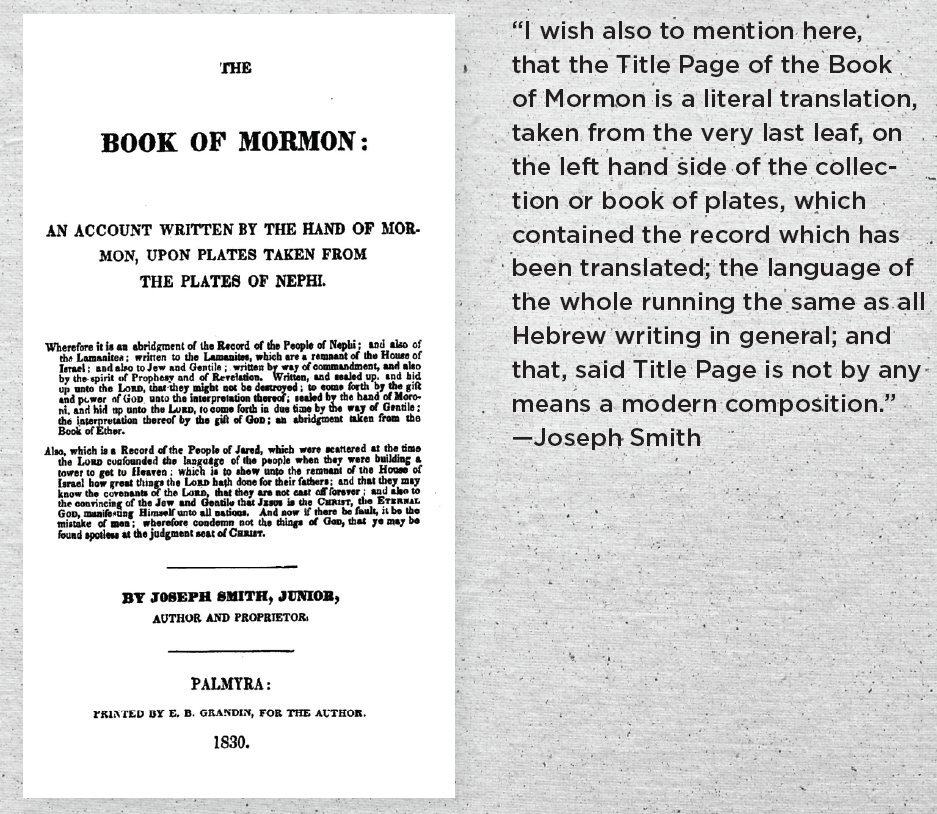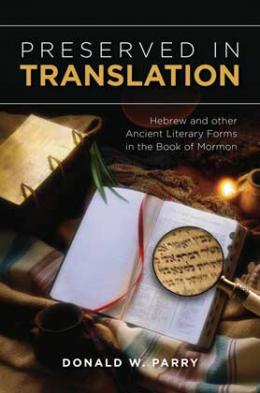Inverted Quotations
Donald W. Perry, “Inverted Quotations,” in Preserved in Translation: Hebrew and Other Ancient Literary Forms in the Book of Mormon (Provo, UT: Religious Studies Center, Brigham Young University; Salt Lake City: Deseret Book), 89‒92.
"line upon line, precept upon precept" (2 Nephi 28:30)
A little-known Hebrew literary technique was first identified by Moses Seidel, a Bible scholar who published his findings in 1955.[1] According to Seidel, Old Testament writers quoting earlier authors sometimes signaled that fact by reversing elements of the quotation. This observation came to be called Seidel’s law. A subsequent researcher, Marc Brettler, explained, “In the Bible, such reversal [Seidel’s law] indicates that the later source is citing an earlier one—it functions like quotation marks in English.”[2]
We can see a well-known example by comparing a passage in Leviticus with a later passage in Ezekiel. The Lord said to Moses: “And the land shall yield her increase, and the trees of the field shall yield their fruit” (Leviticus 26:4). Ezekiel later cited this passage, but reversed the order of the two main clauses as follows: “And the tree of the field shall yield her fruit, and the earth shall yield her increase” (Ezekiel 34:27).
Another example occurs in Deuteronomy and Jeremiah. In Deuteronomy, Moses used the expression “by a mighty hand and by a stretched out arm” (Deuteronomy 4:34). Centuries later, Jeremiah quoted Deuteronomy but reversed the elements: “With an outstretched hand and with a strong arm” (Jeremiah 21:5).[3]
Scholars have also found examples of inverted quotations in the Book of Mormon.[4] While preaching in Zarahemla, Alma asked the people, “Can ye look up to God at that day with a pure heart and clean hands?” (Alma 5:19). He was citing an ancient psalm, but in reverse. The psalm reads, “He that hath clean hands, and a pure heart” (Psalm 24:4).[5]

Here are a few other examples of inverted quotations in the Book of Mormon:
• In Isaiah 28:10 the prophet used the expression “precept upon precept; line upon line.” When citing this passage, Nephi changed the word order to “line upon line, precept upon precept” (2 Nephi 28:30).
• Isaiah wrote, “How beautiful upon the mountains are the feet of him that bringeth good tidings, that publisheth peace; that bringeth good tidings of good” (Isaiah 52:7). In quoting this passage, Nephi moved the beginning of the statement to the end: “Whoso shall publish peace, yea, tidings of great joy, how beautiful upon the mountains shall they be” (1 Nephi 13:37). Abinadi did the same: “And these are they who have published peace, who have brought good tidings of good, who have published salvation; and said unto Zion: Thy God reigneth! And O how beautiful upon the mountains were their feet!” (Mosiah 15:14–15).
• Moroni, in drawing on Isaiah’s words “Enlarge the place of thy tent, . . . and strengthen thy stakes” (Isaiah 54:2), transposed the two clauses to obtain this reading: “Strengthen thy stakes and enlarge thy borders” (Moroni 10:31).
• In Isaiah 52 the prophet commands Zion and Jerusalem, “Awake, awake; put on thy strength, O Zion; put on thy beautiful garments, O Jerusalem” (Isaiah 52:1). Moroni cites this passage from Isaiah but interchanges Zion and Jerusalem, thus commanding Jerusalem to awake and Zion to don “beautiful garments”: “And awake, and arise from the dust, O Jerusalem; yea, and put on thy beautiful garments, O daughter of Zion” (Moroni 10:31).
This literary practice was utterly unnoticed in the Hebrew Bible until the mid-twentieth century, so its presence in the Book of Mormon argues against modern authorship or, given its repeated use, coincidence. Rather, the use of inverted quotations is another striking example of unmistakably ancient literary forms discoverable in the Book of Mormon text that, as they have accrued in number, “have increasingly exemplified the strong correlation between Israelite and Nephite authors.”[6]
Notes
[1] See Seidel, “Parallels between Isaiah and Psalms.”
[2] Brettler, How to Read the Bible, 178. For other treatments of Seidel’s law, see Beentjes, “Inverted Quotations in the Bible”; and Levinson, Hermeneutics of Legal Innovation, 18–19.
[3] See Seely, “Chiasmus in Deuteronomy and Jeremiah,” forthcoming.
[4] To the best of my knowledge, Bokovoy discovered the first examples of inverted quotations in the Book of Mormon; see Bokovoy, “Inverted Quotations in the Book of Mormon,” 2. For additional examples, see the analysis of Bokovoy and Tvedtnes, Testaments, 56–60. Below I add some of my own examples from the text of Isaiah in the Book of Mormon.
[5] This example is from Bokovoy and Tvedtnes, Testaments, 57.
[6] Bokovoy and Tvedtnes, Testaments, 57.
